Now & New
- Explore
Kubinashi Jizo Fall Festival: Frolicking in Frosty Fuchu’s Foliage
Anyone learning Japanese will eventually learn the months of the year, and these days, that’s easy since they’re just numbered. January is ichigatsu (一月 – “first month”), February is nigatsu (二月 – “second month”), and so on. However, back in the day when Japan used a lunisolar calendar based on (but not exactly the same as) the Chinese system, a year was divided into twelve months with distinct names. The eleventh month, which roughly corresponds with November was called Shimotsuki (霜月), or the month of frost, since that time of year traditionally marked the onset of winter in rural Japan. The last harvest of the year occurs, the weather grows colder, the days get shorter, and leaves on deciduous trees put on one last vibrant performance before dancing to the forest floor. Relatively speaking, Hiroshima City doesn’t get so cold in November as to warrant a name like “Frost Month,” but there is a starker contrast farther north, so on the 18th of November, I paid a visit to Fuchu City to catch an autumn festival, take in some flashy foliage, and feel the chilly, hilly climate while gorging on piping hot Fuchu-yaki, the locally lauded variation of Hiroshima-style okonomiyaki.
Hail Fuchuyaki!
Surprisingly, there are no straightforward routes to central Fuchu City (the area surrounding JR Fuchu Station) from Hiroshima Station, so those intent on taking the train would have to ride the Shinkansen or JR Green Sanyo Line to Fukuyama Station and transfer to the Fukuen Line there. It’s also possible to access Fuchu by bus from the Hiroshima Bus Center, and since that line picks up passengers just outside Shin-Hakushima Station, tourists at Hiroshima Station can ride the JR Red Sanyo Line to the next station, exit the JR Shin-Hakushima Station building, and cross the street past the Astram Line Shin-Hakushima Station Building (it looks like an oblong Swiss cheese) to board the next Fuchu-bound highway bus. That day, I chose to transfer via Fukuyama since the sunny weather was certain to afford a magnificent view of Fukuyama Castle, which can be seen from the platforms inside Fukuyama Station!
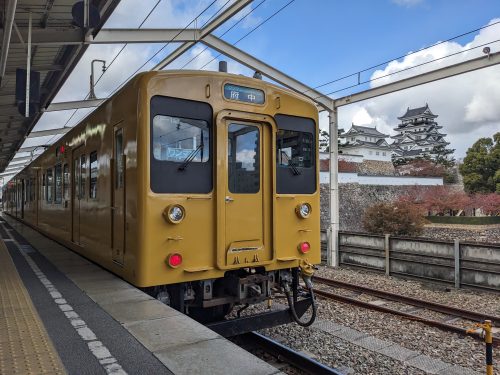
The giddy anticipation of clear skies was extinguished upon arrival in Fuchu, though; of all forms of precipitation possible, Mother Nature chose not rain, not snow, but hail to welcome me. In terms of temperature, it was exactly the November-esque chilliness I was hoping for, and the icy hail pelting me as I walked down the street definitely justified the name “Shimotsuki” for this time of year.
As it was lunch time and the hail was obscuring my vision, I decided to seek out a Fuchuyaki establishment as soon as possible and hide until the hail subsided. I found myself at a diner called “Sachi” and entered to find an interior devoid of customers. This didn’t mean that I would get my food immediately, though, because a throng of customers had called ahead to reserve their seats or order their Fuchuyaki to go. Sachi seemed like a rightfully busy establishment, as there were various awards displayed on a shelf behind the counter, and a fridge magnet even let them brag that they were noted in the 2018 Michelin Guide for Hiroshima and Ehime. After placing my order and waiting about an hour or so for the cooks to get around to me, my hot Fuchuyaki finally graced the counter space where I was seated.
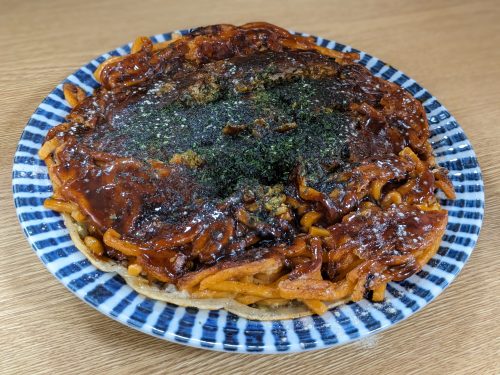
There are Hiroshima-style okonomiyaki restaurants all over the prefecture (and all over the nation, at that) that offer vermillion, spicy soba noodles as an option, but Sachi takes it a step further and offers spicy udon as well, while supplies last. In fact, it was because of this unique option that I knew I had to come here for lunch, and to say I was pleased would be an understatement. True to the nature of Fuchuyaki, these hot udon noodles were fried on the griddle to the point where the exterior of the disc was crispy, and once I ate my way to the interior of the dish, the rich, ground beef embedded in the gummy, moist udon sent my taste buds a message that said, “Hail, traveler, and welcome to Fuchu!”
Headless Jizo
As fate would have it, the sky turned bright as I finished my meal, so I paid and headed out the door for my first point of interest: the Kubinashi Jizo Temple. It’s possible to walk there from Sachi in under 15 minutes, but I took my sweet time admiring the whitewashed buildings of this small town that reminded me of Joge (not surprising since they’re the same city). To reach the temple, I walked up the historic Sekishu Deguchi-dori, where another popular Fuchuyaki restaurant, Hiranoya, sits idly and coaxes prospective diners with its immaculate-yet-old-timey whitewashed exterior. As I had just wolfed down a Fuchuyaki for lunch, I remembered this spot and pledged to be back for dinner.

Along the street were old houses, shops, a Buddhist temple, and a banner that read おいでゃんせ (oidyanse), which is a Fuchu-style greeting that translates to something along the lines of “come on over!” This was my second visit to the city of Fuchu but my first visit to the city center, and even without the aforementioned banner, the serene, rural atmosphere always makes me feel welcome. In the middle of Sekishu Deguchi-dori was a business with an inflatable Christmas display; excellent timing to put that out seeing as Christmas was exactly one month and one week away.
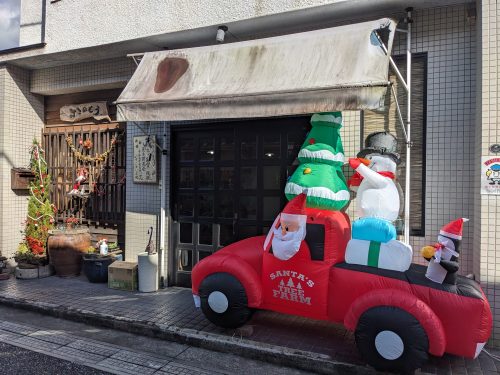
After climbing up a mild incline, I reached the Kubinashi Jizo Temple, which is dedicated to a Jizo idol without a head as “kubinashi (首無)” means “headless.” The Kubinashi Jizo autumn festival was being held on the temple grounds that day, but it was quiet and there were no signs of a festival going on until I approached the front entrance. Upon entering the temple hall, I was met with the sight of several locals (mostly elders) sitting on benches and watching some monks chant before a huge bonfire. I found myself a seat and starting the watch the monks, who sounded like they were in a trance, and the longer I stayed, the more I felt like I would fall into that same trance.
After awakening myself from that near trance, I made my way through the temple to the Kubinashi Jizo altar, where the headless Jizo statue was enshrined. Visitors often rub the part of the statue where the head would be for good fortune in the coming year, and can even offer some prayers alongside a monetary donation and burning incense. I myself partook in said offerings, and when I left, I was rewarded with a pack of shrimp crackers for my trouble (odd for a Buddhist place to give out animal products, but oh well).

Hachiman Shrine Foliage
My next stop was the Fuchu Hachiman Shrine, one of the most recommended places in Fuchu to see fall colors. From the entrance of the Kubinashi Jizo Temple, it was a brief hike up the same hill to reach the shrine, and signs advertising the autumn foliage event indicated I was headed the right way. Once I reached the shrine’s main gate, I climbed up some stone steps and was treated to a breathtaking landscape featuring crimson trees in the foreground and the town below in the background.

I then proceeded past the stone torii gate and deeper into the shrine grounds. The path itself was extremely photogenic with blazing maple trees greeting visitors on either side. Apparently, there was also a festival happening on the Fuchu Hachiman Shrine grounds as there was a space set up for a tea ceremony, but the setup was closed for some reason and nobody was there. There was, however, another stand further in selling hot coffee and snacks.
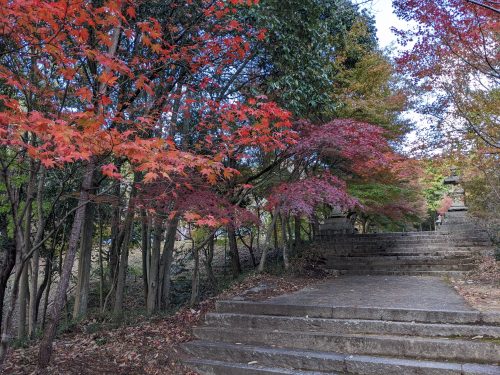
Naturally, this scenery also meant that there were small groups of tourists here and there doing photoshoots amongst the leaves. There was a mother trying in vain to get both her two tiny kids to pose and look at the camera while she took their photo. It was cute and I almost stepped in to help take a photo of all three, but I too was engrossed in my surroundings so I let nature take its course; the mother eventually gave up and made due with whatever photos she had. Lastly, I approached the actual shrine building, where everyone else also stopped for pictures and prayers. With my pics taken and my prayers said, I promptly left the grounds and proceeded down the hill.
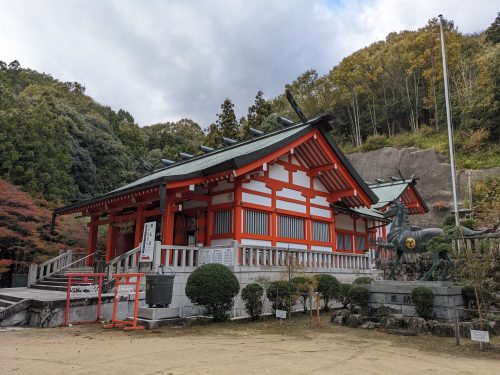
Moment of Joy: Cat Got Your Thigh?
On my way down, I passed by a house where a cat was sitting outside, watching the world go by. I stopped and squatted down to see if it wanted to play, and without any effort on my part, it immediately came up to me and started nuzzling my knees and thighs. Minutes passed by as this continued, and a man came out of the that house to check things out, at which point I greeted him and went on my merry way. I did manage to snap a photo of this friendly feline after playing, though, as its demeanor was reflective of the welcoming attitude of the Fuchu locals as a whole.
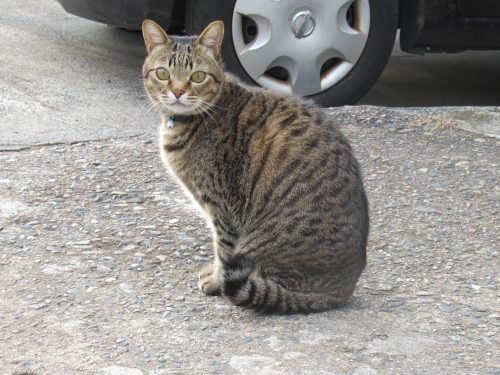
Other Fuchu Sites
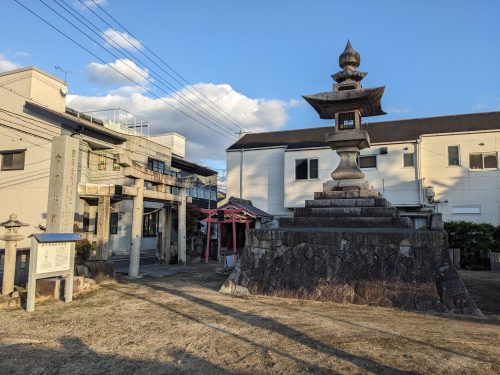
Since there was still some time before dinner, I decided to make my way towards the street leading up to Fuchu Station and hit up two more tourist sites. The first one was a humble shrine with a simple, vermillion torii gate and allegedly the largest stone lantern in Japan. Taking a pic and paying a visit was over in a flash, so I backtracked to a house I passed by earlier called Koi Shiki, and old residence-turned-museum. It’s two stories high with lots of rooms and a garden, but the garden wasn’t much to look at, so have a look at the building façade.
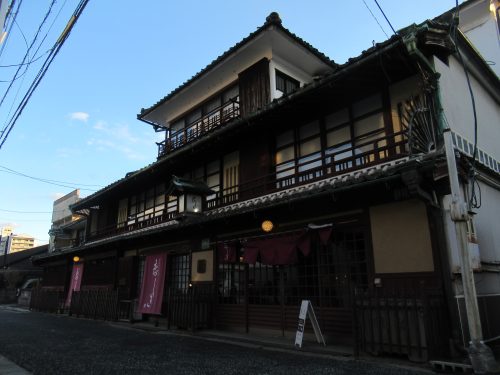
Koi Shiki itself is still a beautiful house characteristic of Fuchu architecture, and the interior is the same as any old residence tourist site found in Japan except for one room, dedicated to locally produced products. From food staples like rice and miso to manufactured goods like textiles and machine parts, Fuchu churns out a lot more than one would expect a city of its size to process. On account of the G7 Summit held this past May, one table in the product exhibition room was chock-full of foods and gifts presented to the leaders of the world’s advanced economies. This paulownia wood box and wooden planter in which hors d’oeuvres were served were but a taste of the lavish trinkets presented to the G7 leaders.
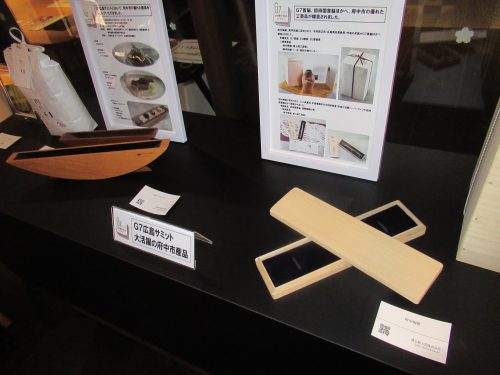
At long last, the clock struck 5 pm so I made my way back to Hiranoya for an evening Fuchuyaki, as per my promise. Thankfully, the restaurant was still relatively empty since they had just opened for dinner, so finding a comfy spot at the counter where I could eat directly off the teppan (鉄板 – “iron plate”) was a cinch. As I had my lunch Fuchuyaki with spicy udon, for my dinner Fuchuyaki, I went with spicy soba, which is uncommon in general, but not to the okonomiyaki establishments around these parts. While waiting on my food, I had an unrivalled view of the TV where Doraemon was showing (a stark contrast to the usual sports match or variety show), so it felt like no time passed at all before my Fuchuyaki was served. My sizzling meal was gorgeous, crispy, tender, savory, spicy, filling; it met my expectations in every way and then some.
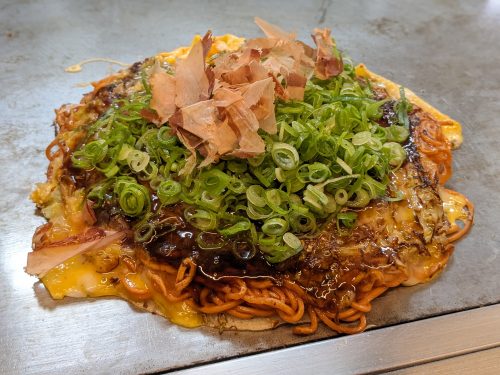
It was dark outside by the time I finished my dinner and left, and because the streets around downtown Fuchu aren’t well-lit for some reason, a flashlight was a necessity. Despite having walked this street in the morning, the path back to Fuchu Station still felt unfamiliar in the dark (that and I couldn’t make out much with all that hail before lunch). However, my heart was burning radiantly from all the good experiences I had that day, from lunch to the Kubinashi Jizo Festival to the autumn foliage to the sociable cat to dinner, so the darkness and cold didn’t bother me one bit. At this point, I have now seen two sides of Fuchu in two different seasons and intend to return once again when the weather warms up a bit. If you’re itching for a quieter trip in Hiroshima Prefecture with splendid nature, intriguing architecture, and gourmet cuisine, then oidyanse to cool, northerly Fuchu!
Written by the Joy in Hiroshima Team
